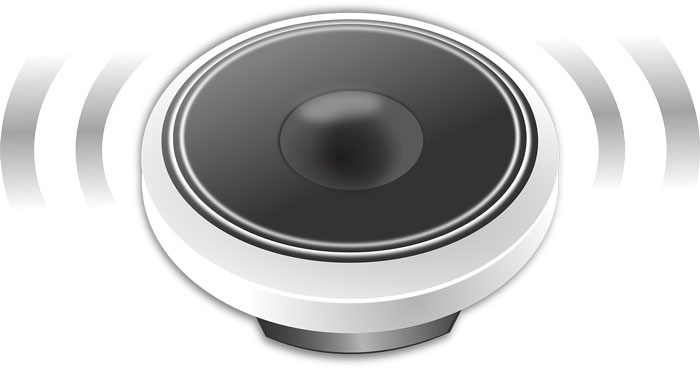Table of Contents
*This post may contain affiliate links. As an Amazon Associate we earn from qualifying purchases.
So your speaker doesn’t work. Something that needs to be taken into account when discussing sound devices, is that they have revolutionized the way we listen to things today. From radio to television, to cellphone devices, speakers and headphones have transcended the way we listen and communicate.
Speakers and headphones have been around doing their job since they were created. Back in the 1920’s horns were used for music and performances as speakers. They also created headphones around the same time, and serve a different but similar purpose; it was less for performances, and more for a person to hear a message like a radio transmission.
The Scoop on Speakers
Evolution of the Speaker
Records of the first speaker ever made dates back to 1861 where German scientist and inventor Johann Philipp Reis installed an electric loudspeaker in a telephone prototype. Fifteen years later, Alexander Graham Bell got a patent for his first electric loudspeaker which, unlike Reis’s, could reproduce intelligible speech as part of the telephone he was inventing.
In 1877, Bell’s design became the catalyst for the creation of an improved electric loudspeaker from someone else – a German scientist that goes by the name of Ernst Siemens. At first, the sound quality was bad, and amplification was almost impossible at low volume. Loudspeakers were driven by compressed air, which moved a thin vibrating membrane across a metal horn. Not the ideal thing to use when you’re looking to broadcast a sound signal.

image source: www.unsplash.com
In 1937, Metro-Goldwyn-Mayer introduced the Shearer Horn, which became the first two-way loudspeaker system that was designed for use in the film industry. It was made of eight 27-inch low-frequency drivers, and was designed by noted audio electronics, acoustics designer, and engineer Rudolph Bozak.
He was the Chief Engineer for American speaker company Cinaudagraph. As everyone began to see the difference between the two, people chose electric loudspeakers over their old Victrola-style acoustic gramophones.
The U.S. Navy then assigned an engineer, Arthur Janszen, a research project to figure out a way to change the way prior speakers were working. He believed the cone speakers available then were too non-linear in phase and amplitude. That made the speakers of the time poor in dealing with sound quality, so he built an electrostatic model of his own and created the electrostatic speaker.
Over the next half-century, advancements in the field of an electrostatic loudspeaker design resulted in the formation of a competitive and rapidly evolving market consisting of products that provide a better and more refined listening experience.
Why Is Having Speakers Important?

image source: www.unsplash.com
Have you ever found yourself in a situation where you need to have the best music playing for yourself or your guest? Whether it’s at home, outside, or someplace remote there are speakers designed just for you.
Main Types of Speakers
Home Indoor Speakers
[amazon box=”B076TFDDS4″ grid=”1″]
Indoor speakers can come as a simple stereo pair, or they can be as comprehensive as a multi-unit home audio setup. They are designed to deliver amazing sound and provide the optimal audio output for indoor use.
Outdoor Speakers
[amazon box=”B00378KMEG” grid=”1″]
Most outdoor speakers today are Bluetooth or NFC-enabled, allowing you to use your smartphone or tablet as a portable audio source. They are meant to be used in even the most extreme environments since the sound quality usually takes a backseat to rugged design and portability.
Car Speakers
[amazon box=”B000230LC2″ grid=”1″]
The main specifications to consider when buying car speakers are power handling and sensitivity. These can either be full-range or component speakers, and are made from a different woofer, tweeter, and surround materials.
Home Theater Speaker
[amazon box=”B071GQZL6P” grid=”1″]
Home theater speaker systems are available in various configurations; the most common of which are the 5.1- and 7.1-channel systems. When positioned correctly, these speakers produce a sound image that mimics that of a cinema or movie theater.
How to Install Speakers
One of the most commonly asked questions when purchasing a pair of speakers is how to install them. There are safety tips you should follow to make sure that wherever you place these speakers, you or nobody else gets hurt and that the product doesn’t get damaged.
1
Setting up Your Equipment
Most outdoor speaker systems run off an existing indoor receiver. Since the receiver is a sensitive piece of electronics, you usually want to set the receiver up indoors. A multi-zone receiver allows you to have music playing outside while something else plays inside.
2
Install a Volume Control Box Outside
Make sure it is in a sheltered location. You will run the speaker wire from the receiver to the volume control box, and then from the volume control box to the associated speakers. Most volume control boxes can be easily mounted on an outdoor wall.
3
Install a Multi-Channel Amplifier
When running multiple pairs of speakers, each pair you add increases the chance of overloading the receiver’s built-in amplifier. You can install the amplifier right next to the receiver and then run the speaker wire out of the amplifier.
4
Obtain Enough Speaker Wire
16-gauge is fine for less than 80 feet (24 m), but longer wires should be 14- or 12-gauge. If you don’t use the right gauge for your speakers, your audio quality will suffer. With the longer the wire, the more degradation will occur. Run your speaker wire from the receiver to the outside area.
Drill a hole low in the wall to run the speaker wire from the inside to the outside. Seal the hole with silicone to maintain your house’s insulation. Run the speaker wire to the volume control box and then run a second wire from the box to the speakers.
Speaker Doesn’t Work – Diagnosis
Like any other product or appliance, speakers run the risk of being damaged and not working. There are a few things you could test out for diagnosis when your speaker doesn’t work. Many times, it’s something simple, other times not so much.
How to Troubleshoot Speakers

image source: www.unsplash.com
Measure the Speaker Impedance
One way to troubleshoot when your speaker doesn’t work is to check the speaker’s impedance with a multimeter. Speakers always come with an impedance rating. You can find the impedance rating written on the back of the speaker.
When measuring the impedance of the speaker using a multimeter, place one probe on one terminal when your speaker doesn’t work and the other probe on the other terminal of the speaker. A good speaker will have an impedance at just about its impedance rating. If the impedance is at the speaker’s rating, the speaker normally is good.
Checking for a Shorted Speaker or Speaker Wire
When the speaker doesn’t work, it may be disconnected at the far end of the wire. Just recheck the wire to make sure it’s connected. A common problem with speaker wires is that the bare copper ends of the wire sometimes touch other speaker wires or other metal parts.
It’s best to strip only 1/2-5/8″ of insulation and twist the protruding copper strands tightly together before connecting them to the receiver or amplifier. Be sure to do the same at the speaker end of the wires.
Figuring Out Which Speaker is Broken
Turn the volume up loud enough to be heard without having the speaker shut itself down. Then listen to each of the speakers. When the speaker doesn’t work, it may be the bad one. If the unit shuts down with no speakers connected, then it will need repair.
Speaker Doesn’t Work – Repair

image source: www.unsplash.com
Eventually, you will blow a speaker out, or a part of the machine will eventually stop working. The first thing that will come up is how do I fix it? The first step in trying to repair when the speaker doesn’t work is to make sure it’s plugged in correctly. This ensures you waste little time figuring it out before messing with anything on the inside.
If your speaker isn’t working, or it has a hole in it, you can try to sew it shut.
The First Thing You Would Need is a Thread And Stitch.
Tie a big knot at the end of your thread if this is your first time sewing anything, otherwise, use whatever fastening method for which you’re comfortable. Push your needle through the cone, approximately 1/8″ to 1/4″ from the outer edge. Pull your thread tight, and then push down through the ribbing, near the inside edge. Keep the stitch tight. Repeat this until you have gone all the way around your cone or have run out of thread.
Next Use Glue And Wait.
Add a second layer of structural integrity to your speakers by using the glue. Run a semi-consistent bead over your stitched area. It doesn’t have to be thick. Use your glue and spread it to cover your thread evenly, taking care not to wipe too much glue off.
And Last But Not Least, Install And Test The Speaker.
Now that the glue has dried install your speaker and give it a test, and you’re all set!
Conclusion
Like any other product or appliance, a speaker runs the risk of being damaged and just not working. There are a few things you could test out when running into problems with your speakers. Many times, it’s something simple, other times not so much.

